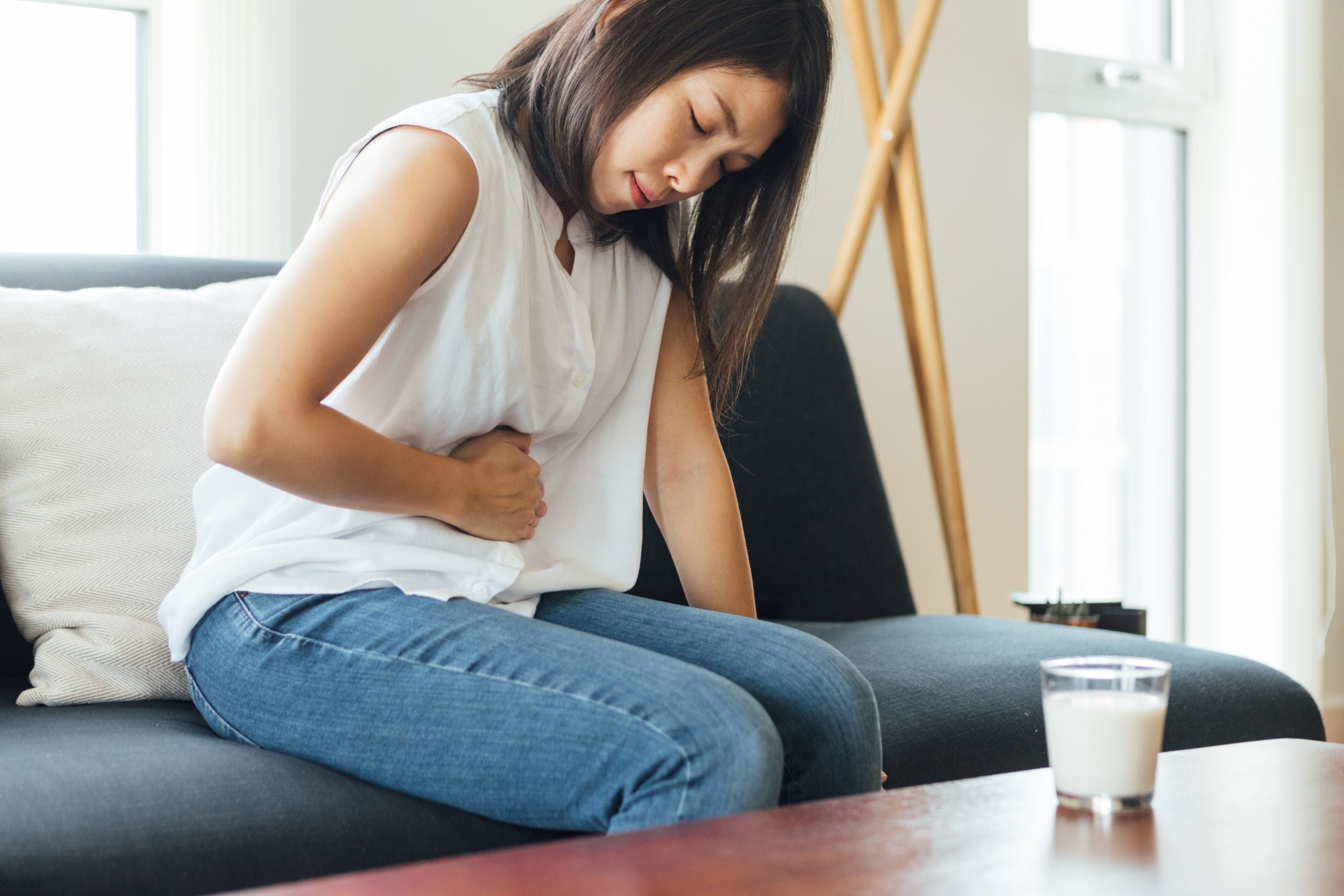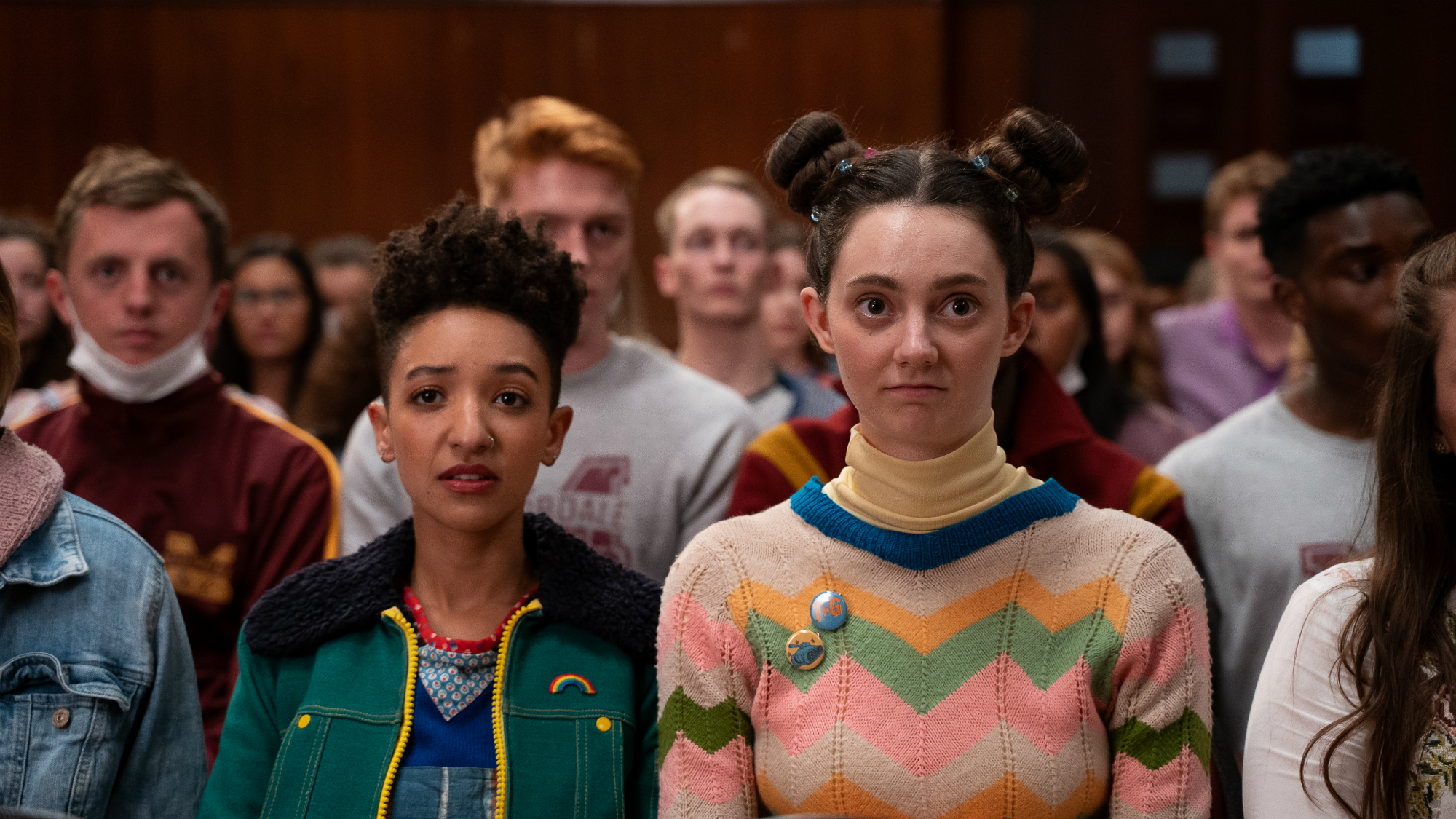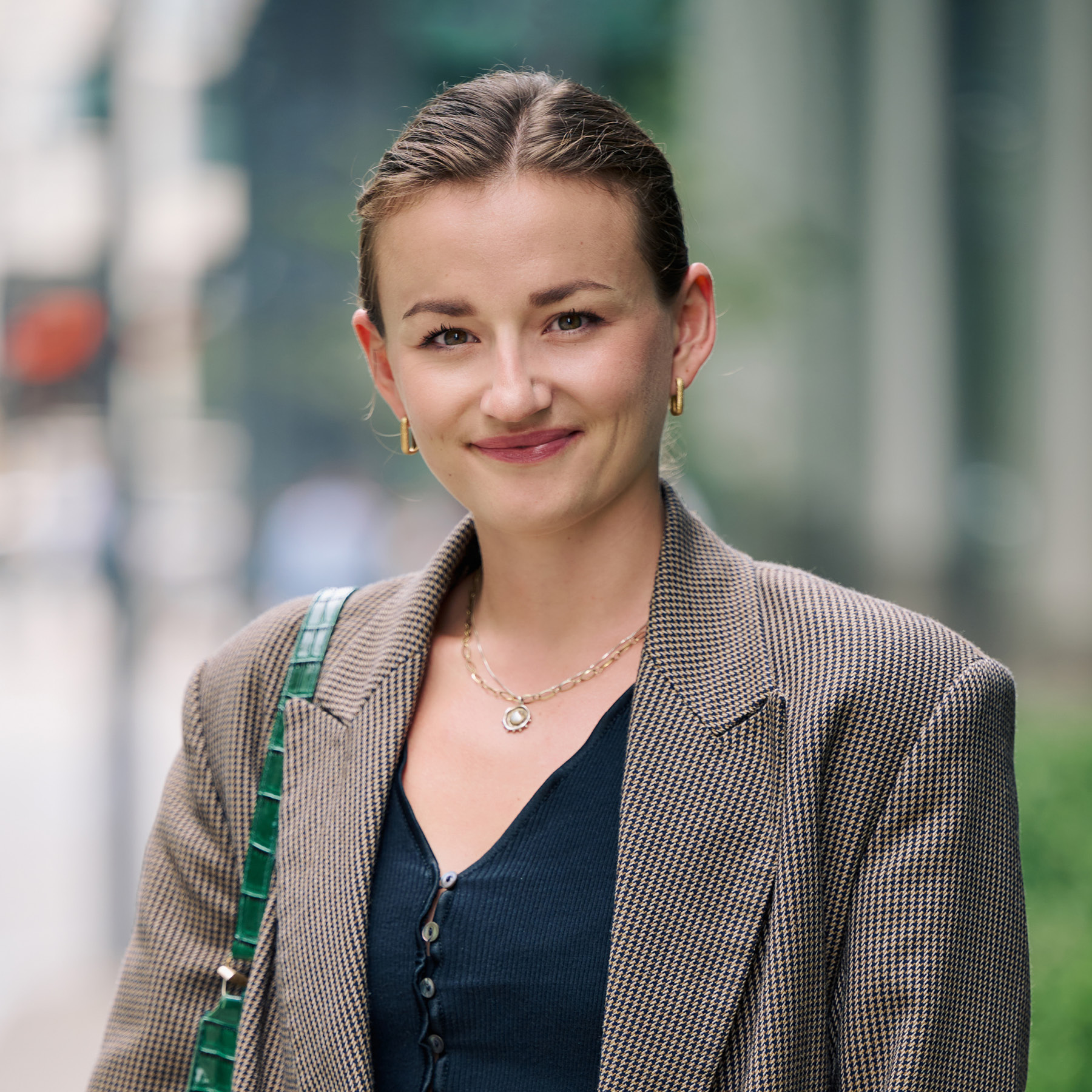Endometriosis symptoms: How to know if you have the chronic condition, plus when to see a professional
Stats highlight just how long it's taking women in the UK to get diagnosed.

Stats highlight just how long it's taking women in the UK to get diagnosed.
Endometriosis symptoms affect one in ten of us, and an estimated 1.5 million women in the UK alone. But despite it being so widespread, there's little awareness of what the condition entails (it's not just heavy, painful, irregular periods) and how it can be managed.
New stats show you could fly to the moon 456 times before being diagnosed with the female health condition.
Research by period brand Yoppie has highlighted just how slow diagnosis is of endo is in the UK. At current, it takes an average of seven and a half years to secure a diagnosis and, quite frankly, it's not good enough.
Yoppie founder Daniella Peri says: “Endometriosis is tricky to diagnose due to the fact that symptoms can differ drastically from one woman to the next, plus they're often be similar to other conditions, resulting in misdiagnosis."
Still, she maintains - 'An average timeframe of seven and a half years simply isn’t good enough'. Why? Well, a whole whole load of reasons, but mainly, because it could seriously impact the quality of life for those suffering.
We've brought you guides to early menopause, PCOS and PMDD: next up, your complete expert-led guide to endometriosis. We've grilled a couple of endo experts to help you better understand the condition. So whether you think you may have endometriosis, have just been diagnosed or simply want to learn more, read on for an in-depth guide.
What is endometriosis?
So, what is it? ‘Endometriosis is the growth of endometrial-like tissue (the lining of the womb/uterus) outside of the uterus,’ explains Dr Anita Mitra, aka the Gynae Geek. ‘This is commonly on the ovaries, bowel, bladder and – in rare cases – on the liver and lungs.
Marie Claire Newsletter
Celebrity news, beauty, fashion advice, and fascinating features, delivered straight to your inbox!
‘The tissue responds to female hormones throughout the menstrual cycle as it would if it were in the womb; it thickens and then begins to fall away as it would during a period. However, because it’s not inside the womb with an escape route, it causes irritation, inflammation and often excruciating pain.
‘Eventually, it can cause scar tissue to develop, which in turn causes the normally mobile internal organs of the pelvis to become stuck together, further adding to the pain.'
There are four stages of endometriosis, depending on its severity. 'Endometriosis can be staged during surgery according to where it is, how much there is and how much scar tissue is present,' Anita adds. 'Stage I is minimal, Stage II - mild, Stage III - moderate, and Stage IV is severe.'
Endometriosis symptoms: 9 main signs to know about
‘A lot of people think endometriosis symptoms are just heavy, painful periods; while that can be true, and it’s probably the most common symptom, it can be a whole lot more than that,' explains Anita.
The most common endometriosis symptoms include pain in your lower tummy or back, severe period pain, difficulty getting pregnant and fatigue, according to the NHS and Endometriosis UK.
‘Endometriosis symptoms also depend on where exactly tissue is growing,' Anita continues. 'For example, excruciating pain on having your bowels open could be a sign that it’s growing on your bowel.'
'Endometriosis also commonly causes bloating, diarrhoea and constipation, and the presence of scar tissue can make having sex painful.’
Endometriosis: how to diagnose
Diagnosing endometriosis can feel like a long process.
Like our guide to endometriosis diagnosis explains, after seeing your GP, you'll be referred to a gynaecologist and will also need an ultrasound. ‘Endometriosis doesn’t show up on scans or blood tests, but it’s important to do a scan for other causes of pain,’ Anita explains. The scan can pick up other signs of the condition, such as a certain type of cyst called endometriomas that have a classic appearance.
‘A normal scan doesn’t rule out the diagnosis however – the only definitive way to diagnose is endometriosis through a laparoscopy, keyhole surgery that involves putting a camera through your belly button to look directly inside your tummy.’

Endometriosis cure: is there such a thing?
The good news is that the condition is treatable, both through medication and surgery. ‘Surgery will sometimes be performed at the time of diagnosis, and involves releasing adhesions [fibrous bands that form between organs and tissue] and removing or destroying deposits and cysts,' Anita explains.
‘This should always be performed by a specialist in endometriosis surgery and, although many people will notice an improvement, there is a high rate of recurrence in symptoms post-surgery.
‘Many surgeons will advise some form of hormonal therapy, such as the contraceptive pill, Mirena coil, or injections of something called a GnRH analogue. This is also an option for people who don’t want or need surgery; the aim is to block the hormones that cause tissue to grow and shed every month, thus reducing the amount of pain and bleeding.’
Endometriosis pain: how to manage your condition
Anita advises that painkillers can be used, but when endometriosis pain is at its worst they may not be that helpful. 'But it's definitely worth a try,' she adds. 'Hormonal medications are the next step because they stop the build up and shedding of endometriotic plaques, which is a cause of a lot of the pain.
'One of the biggest problems I see is constipation, which is surprisingly common because a lot of us don't drink enough water or eat enough fibre. Constipation can make endometriosis pain worse, as it can make your stomach quite bloated and pull on the scar tissue, but it also means you need to strain more to open your bowels – which for many women is already incredibly painful. So simple things like increasing fibre and fluid intake could see an improvement in symptoms.'
A very common worry is that there's a link between endometriosis and cancer, or even that it is a type of cancer – possibly because pain is such a red flag for so many of us – but that's not the case.
'While there are a few small studies suggesting a possible link, there are no large, robust studies confirming a causal link between endometriosis and endometrial cancer,' Anita says.
A new release from BeYou (£7.99) certainly looks interesting: their new monthly patches state on their website that they relieve cramps and pains the natural way, and are both biodegradable and vegan. "Created with steam distilled essential oils; eucalyptus oil and menthol from peppermint leaves (the non-synthetic kind), these contain natural vasodilator, anti-inflammatory and powerful analgesic properties to help relieve pain. Simply apply whenever you feel pain - you'll experience fast acting results and twelve hours of relief with each patch," share the brand.
Endometriosis diet: can food help my symptoms?
First things first: there is no need to eliminate entire food groups from your diet. 'There are a lot of people who have read about cutting out dairy and gluten, although there's no solid evidence that these worsen endometriosis' Anita says.
'But I think everyone should be treated as an individual – what might work for one person may not work for another. If you want to try it, by all means go ahead and try to keep a symptoms diary. But if this doesn't improve your symptoms, there's no need to cut things out of your diet for fear it's making your endometriosis worse.'
Nutritionist Henrietta Norton is not only an expert in nutritional female health, but also on what it's like to live with endometriosis, having been diagnosed in her twenties. After her laparotomy and laser treatment, she sought the help of a nutritional therapist, which she says changed her life.
'Research continues to prove that nutrition and diet can be fundamental to managing the condition,' she says. 'Studies show that taking the right nutrients through supplements can reduce symptoms significantly – 98% of the women in one study experienced improvements.'

So, what is it worth trying to consume more of in your diet? ‘Zinc and magnesium are used in abundance during states of both physical and mental stress; as endometriosis is a state of physical stress, the demand is even greater than normal,' Henrietta continues. 'Women can actually lose up to half their magnesium supply during menstruation.
'Endometriosis sufferers often experience heavy bleeding during their period, significantly reducing stores of iron. This, along with the trace mineral molybdenum, is required for the elimination of oestrogen (it's thought that endometriosis is characterised by a dominance of oestrogen), and without adequate iron stores the pain management process can also be affected.’
‘Women with endometriosis have also been reported to have a lower intake of carotenoids (found in vegetables like carrots, kale and spinach) and D-glucarate (found in cruciferous vegetables, which blocks beta-glucoronidase) than women without endometriosis.’
Wild Nutrition's Endometriosis Complex was created with the latest research in mind to use as part of a multi-disciplinary approach to managing the condition, Henrietta says. 'Using natural forms of nutrients that are efficiently absorbed and used by the body in combination with organic herbs [magnesium, methionine, probiotics and more], the curated formulation addresses the complex condition affecting the immune and digestive systems and hormonal stability.'
Endometriosis and pregnancy: So, can I conceive?
A common worry is that an endometriosis diagnosis means pregnancy is unlikely or even impossible. But is this actually the case? ‘Not always,’ says Anita. ‘Generally it depends on the severity, but saying that, we do see a lot of women with severe endometriosis on the labour ward delivering their babies, so it’s not impossible.’
Case in point: Despite being told that she would never have children, Henrietta now has three sons, all of whom were natural conceptions and healthy pregnancies.
‘I also see a lot of patients being diagnosed with endometriosis during the investigative process for infertility,' Anita continues. 'On further questioning, the vast majority report a long-standing history of the common symptoms, which is saddening to hear as they often say they thought it was normal, or something they just had to tolerate as part of being a woman.
‘This is why we need to get more comfortable with talking to our friends and families about periods and women’s health – to know what is normal and what might require further investigation. And it’s also a reason we shouldn’t leave potential gynae issues right up until trying to get pregnant.’
As part of her mission to educate women everywhere about their reproductive health, Anita published her first book, which you can order now. The Gynae Geek: Your No-Nonsense Guide to 'Down There' Healthcare tackles all of your burning gynae-related questions, from periods to smear tests to PCOS – it's the definition of essential reading.
Read Anita's endometriosis blog post on the Gynae Geek for more information
Day-to-day life
As with any condition, it's important to listen to your body and know when it's telling you to take it easy. ‘I have become acutely aware of how the foods I choose to eat and my lifestyle affect my symptoms,' Henrietta says.
'I understand the importance of slowing down, taking time to restore and just "be" in everyday life, which has a profound affect. I now use my symptoms as gentle reminders signalling me to slow down and to rest and digest.’
Things may feel very overwhelming – especially at first – but there are a number of support groups, helplines and online forums you can visit to get more advice and emotional support. Head to endometriosis-uk.org (Anita's go-to patient resource) for more information.
Note that the purpose of this feature is to inform, not replace one-to-one medical consultations. For advice tailored specifically to you, always discuss your health with a doctor.

Ally Head is Marie Claire UK's Senior Health and Sustainability Editor, nine-time marathoner, and Boston Qualifying runner. Day-to-day, she heads up all strategy for her pillars, working across commissioning, features, and e-commerce, reporting on the latest health updates, writing the must-read wellness content, and rounding up the genuinely sustainable and squat-proof gym leggings worth *adding to basket*. She also spearheads the brand's annual Women in Sport covers, interviewing and shooting the likes of Mary Earps, Millie Bright, Daryll Neita, and Lavaia Nielsen. She's won a BSME for her sustainability work, regularly hosts panels and presents for events like the Sustainability Awards, and is a stickler for a strong stat, too, seeing over nine million total impressions on the January 2023 Wellness Issue she oversaw. Follow Ally on Instagram for more or get in touch.